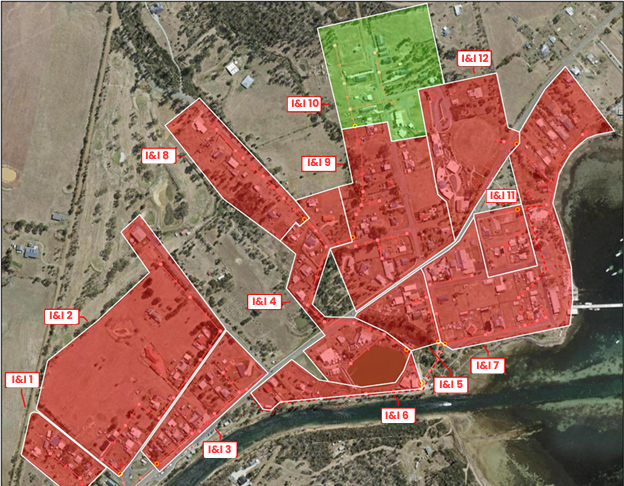A progressive utility in Australia has been facing challenges related to Inflow and Infiltration (I&I) in its wastewater network. These issues not only lead to unnecessary strain on the system but also pose environmental concerns. In response, Detection Services Group (DSG) initiated a comprehensive project to identify and address I&I hotspots. The project employed cutting-edge technologies and methodologies to accurately pinpoint problem areas and facilitate targeted remediation efforts.
Addressing I&I hotspots is a crucial but singular step in managing wastewater systems. Utilities are increasingly seeking cost-effective strategies for comprehensive planning, identification, and resolution of critical wastewater conveyance, pumping, and treatment needs. Beyond hotspot mitigation, utilities employ hydraulic modeling, condition assessment technologies, and proactive maintenance to understand and manage their networks better. These tools help optimise system performance, reduce environmental impacts, and enhance resilience, regardless of their current I&I management maturity. By integrating these methods, utilities can achieve sustainable and efficient wastewater management solutions.
Objective
The primary objective of the project was to conduct a thorough assessment of I&I hotspots within the wastewater network of a particular suburb. This involved deploying ultrasonic level sensors, in this case our innovative iTrackers from Eastech, at critical points in the system to monitor wastewater levels. The data collected would then be analysed to determine the severity of I&I in various mini-catchments, allowing for prioritisation of repairs and strategic planning.
Alternative and traditional solutions such as CCTV and smoke testing had proved to be unsuccessful and as such the client was looking for a solution that provided a high-resolution outcome identifying the cohorts of the network which were contributing to the I&I problem.
Solution
Detection Services utilised Micro Inflow & Infiltration Source Detection, a specialised service designed to detect I&I hotspots. The approach involved the following key steps:
- Deployment of iTrackers: Ultrasonic level sensors, iTrackers, were strategically placed in manholes at critical points within the wastewater system. These sensors continuously monitored wastewater levels in mini-catchments, providing valuable data for analysis.
- Data Collection and Analysis: Over a 67-day period, data from the iTrackers was collected and analysed to assess the severity of I&I in each monitored mini-catchment. Although the flow figures calculated had some margin of error, they offered crucial insights into problem areas by comparing catchments over the same time frame.
- Rain Data Integration: Rainfall data was overlaid with flow data to differentiate between direct inflow and groundwater infiltration. This integration helped in understanding the root causes of increased flows and prioritising corrective measures accordingly.
- Estimation of Non-Residential Flow: To ensure accuracy in data interpretation, DSG estimated non-residential flow for each site based on factors such as business types, staff count, and expected visitor numbers. This data was converted into equivalent residential property counts for input into the iTracking software.
- Monitoring and Adjustment: The iTracker monitors recorded flow levels at 15-minute intervals over several weeks, including dry weather periods and rain events. Data from compromised monitors was excluded to maintain accuracy and reliability in the analysis.

By meticulously executing these steps, DSG provided the client with a comprehensive assessment of I&I hotspots in the catchment. The information gathered enabled the client to prioritise areas for further investigation and develop an effective I&I management plan which subsequently reduced I&I by over 70%.
Overall, the project demonstrated the value of advanced technologies and strategic methodologies in addressing complex wastewater infrastructure challenges. The project’s analysis revealed crucial insights, particularly related to significant infiltration and inflow in part of the mini catchments created by DSG.

The monitoring efforts indicated widespread infiltration and inflow across the area, with a clear distinction between groundwater and rainwater entry points. Recommendations were tailored to address these specific issues.
Specific catchments required further investigation due to unique flow patterns. One catchment in particular, which included a school, showed exceptionally high flow peaks, warranting a re-analysis of flow data to identify potential causes such as irrigation runoff or other sources.
“By meticulously executing these steps, DSG provided the client with a comprehensive assessment of I&I hotspots in the catchment. The information gathered enabled the client to prioritise areas for further investigation and develop an effective I&I management plan which subsequently reduced I&I by over 70%.”
A town-wide approach was initially proposed considering the widespread nature of groundwater entry, suggesting a comprehensive CCTV inspection of all pipes in the area. This integrated approach aimed to pinpoint sources of the problem and guide appropriate responses, whether through targeted treatments for leaky catchments or a broader area-based strategy. Moving to an iTracker solution saved significant effort and expenditure for the client.
The project’s culmination involved combining investigations and metrics to assess overall network performance, providing essential guidance for the client to determine the most effective strategies for addressing I&I issues in the catchment.
In summary, a 70% reduction in I&I as a result of the iTracker project leads to substantial financial savings, improved water quality, enhanced operational efficiency, regulatory compliance, and significant community and environmental benefits. This makes it a highly valuable achievement and result for the client.
The identification of I&I hotspots is one step in your overall wastewater management strategy. Contact us today to discuss our smart wastewater program, which provides utilities with a comprehensive, cost-effective end-to-end solution.









